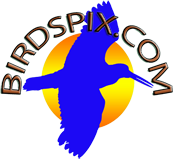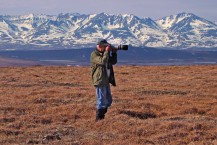February 2-6: During three prior trips to the Texas lower Rio Grande Valley, one species that managed to elude me all three times despite hours of searching, is the Aplomado Falcon. Accordingly I resolved to one day make another trip to the valley, but at such time that the prospect of an especially tempting rarity or two would make the trip extra worthwhile. So when a Gray-crowned Yellowthroat showed up at Estero Llano Grande State Park in Weslaco on January 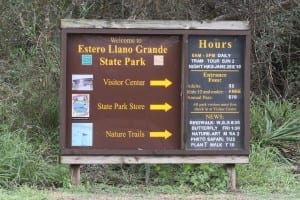 24, to complement the first-time-in-the US Striped Sparrow that was being seen in Williamson County since January 11, it was finally time to head back to Texas. To add to the allure, these three species could bring the ABA photographed species total for birdspix.com up to 700, not even including the planned stop at Aransas Bay for Whooping Cranes.
24, to complement the first-time-in-the US Striped Sparrow that was being seen in Williamson County since January 11, it was finally time to head back to Texas. To add to the allure, these three species could bring the ABA photographed species total for birdspix.com up to 700, not even including the planned stop at Aransas Bay for Whooping Cranes.
I arrived in Harlingen at 10:30 AM on February 2 and headed straight from the airport to Estero Llano Grande in Weslaco, but the Yellowthroat, which had been seen two or three times earlier in the morning, was not to be spotted again that day, so I planned to return early the following morning, hopeful despite the weather report for temperatures in the 40’s with a strong likelihood of rain.
Accordingly, I was at the appropriate spot on the Spoonbill Trail by 7:45 AM, only to be told by the one other observer there that I had just missed the bird by five minutes. By and by a small group gathered, and the Yellowthroat actually was briefly seen twice, but both times off the trail at a spot where I somehow managed not to be, and by noon I had to leave in order to allow adequate afternoon time for the elusive Aplomado Falcon.
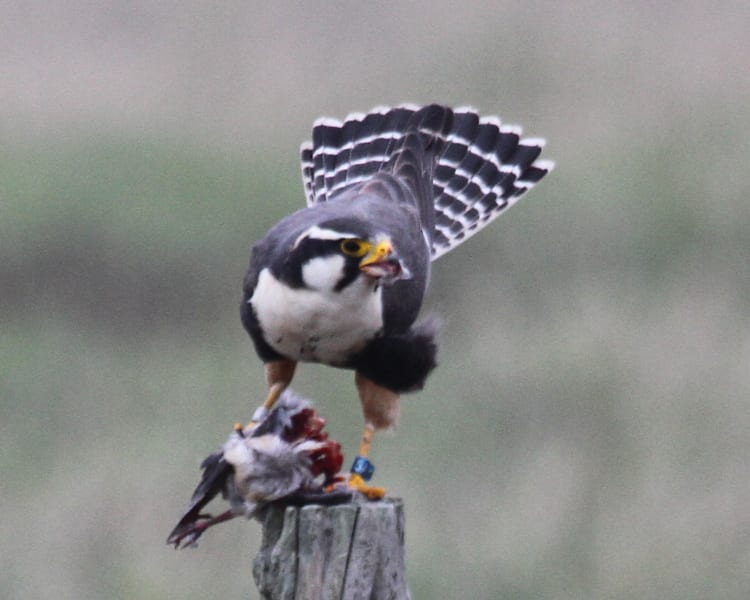 The falcon search began along route 100 which runs east-west past the northern end of the Old Port Isabel Road north of Brownsville, since Old Port Isabel Road itself, also a place where Aplomado Falcons are known, is too muddy to traverse at this time of year. With no luck there, it was on to Lake Buena Vista Boulevard, which runs past the Cameron County Airport and becomes the access road to Laguna Atascosa NWR. With a bit of
The falcon search began along route 100 which runs east-west past the northern end of the Old Port Isabel Road north of Brownsville, since Old Port Isabel Road itself, also a place where Aplomado Falcons are known, is too muddy to traverse at this time of year. With no luck there, it was on to Lake Buena Vista Boulevard, which runs past the Cameron County Airport and becomes the access road to Laguna Atascosa NWR. With a bit of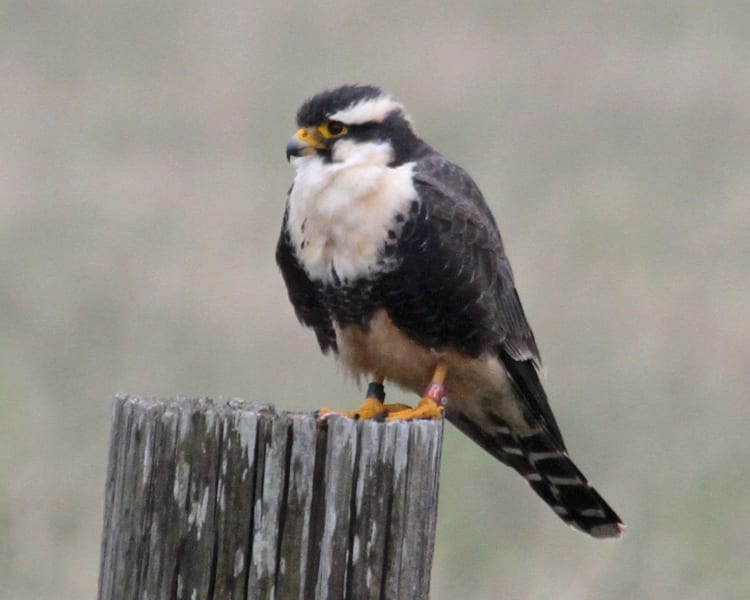 patience, this general area, with the fence posts on either side of the road, starting just north of the airport, is arguably the best place in Texas to find Aplomados. The falcons hunt the fields here and repeatedly return to the roadside fence posts to eat their catch, usually a small bird. I spotted a juvenile Aplomado on a fence post almost right away, but I had seen it too late and the car spooked the bird, which flew off to perch on a low tree branch some hundred yards away. I continued on about a mile and made a u-turn, hoping the falcon might return to its roadside fence post, but it remained on its same distant perch.
patience, this general area, with the fence posts on either side of the road, starting just north of the airport, is arguably the best place in Texas to find Aplomados. The falcons hunt the fields here and repeatedly return to the roadside fence posts to eat their catch, usually a small bird. I spotted a juvenile Aplomado on a fence post almost right away, but I had seen it too late and the car spooked the bird, which flew off to perch on a low tree branch some hundred yards away. I continued on about a mile and made a u-turn, hoping the falcon might return to its roadside fence post, but it remained on its same distant perch.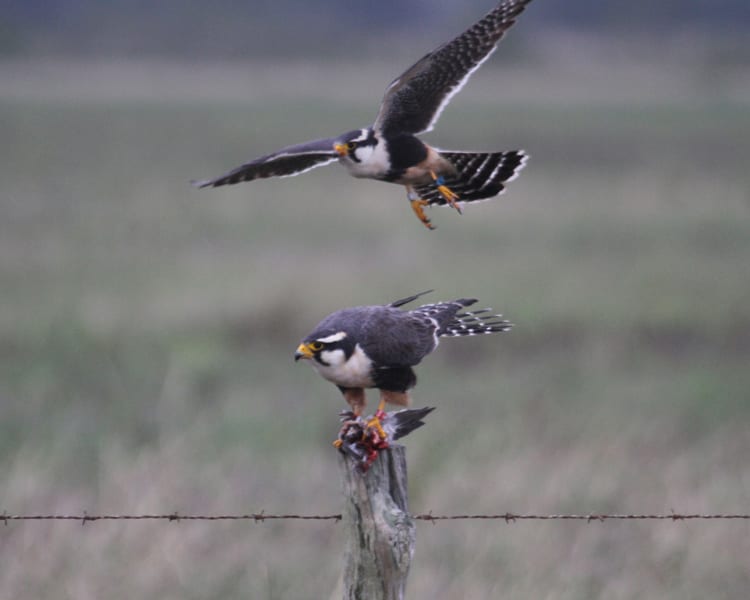 Then, just a hundred yards up on the opposite side of the road, a pair of adult Aplomados flew in, one with a fresh kill. As I inched the car forward with the window rolled down, the birds paid me no mind at all, and I was able to spend an uninterrupted half hour observing them. The bird with the kill (which looked to be a swallow) proceeded to devour its meal while refusing to share even a morsel of it with its mate. They were still there when the forecasted rain finally began in earnest and I left, feeling elated, just before the heavens opened up.
Then, just a hundred yards up on the opposite side of the road, a pair of adult Aplomados flew in, one with a fresh kill. As I inched the car forward with the window rolled down, the birds paid me no mind at all, and I was able to spend an uninterrupted half hour observing them. The bird with the kill (which looked to be a swallow) proceeded to devour its meal while refusing to share even a morsel of it with its mate. They were still there when the forecasted rain finally began in earnest and I left, feeling elated, just before the heavens opened up.
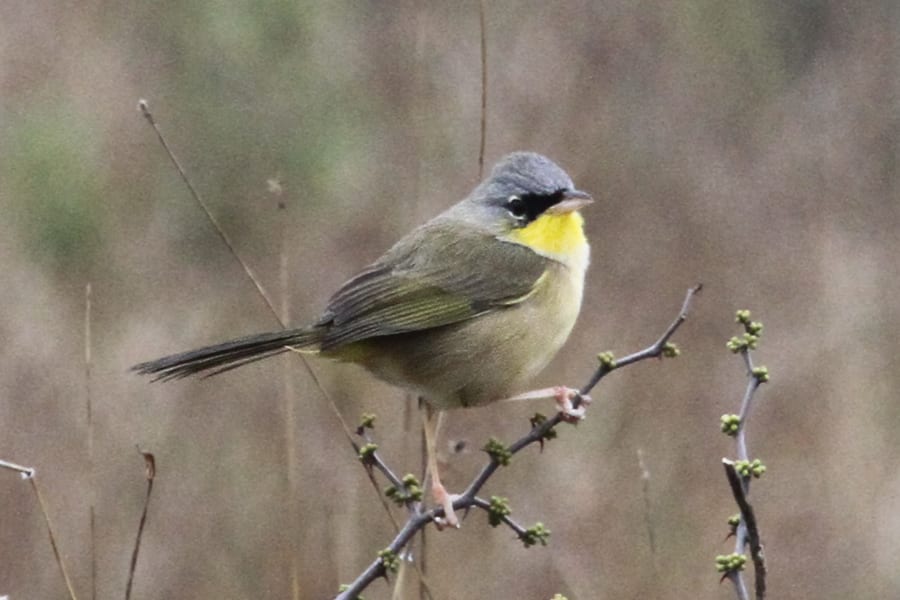 The third day (second morning) the rain had moved out, and I had the entire day, if necessary, back at Estero Llano Grande since there was now no need to return to falcon country. This time the Gray-crowned Yellowthroat called cooperatively and popped up out of the deep grass at 8:45 AM and remained more or less in view continuously for some
The third day (second morning) the rain had moved out, and I had the entire day, if necessary, back at Estero Llano Grande since there was now no need to return to falcon country. This time the Gray-crowned Yellowthroat called cooperatively and popped up out of the deep grass at 8:45 AM and remained more or less in view continuously for some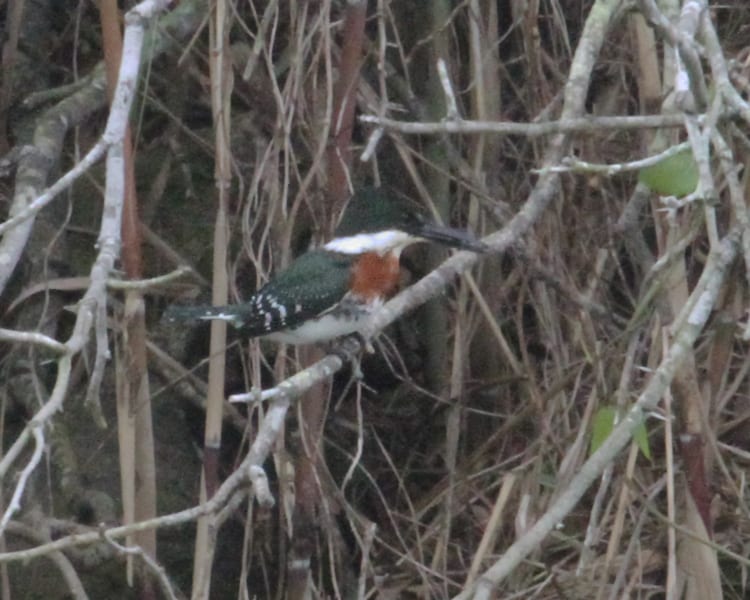 twenty-five minutes allowing for excellent viewing and photography. Ample free time then remained to find a few other local specialties here including a beautiful male Green Kingfisher at Alligator Pond.
twenty-five minutes allowing for excellent viewing and photography. Ample free time then remained to find a few other local specialties here including a beautiful male Green Kingfisher at Alligator Pond.
Next was an afternoon drive up US route 77 and then through Corpus Christi to Rockport on Aransas Bay, the winter home of nearly all of the world’s limited population of Whooping Cranes. It was 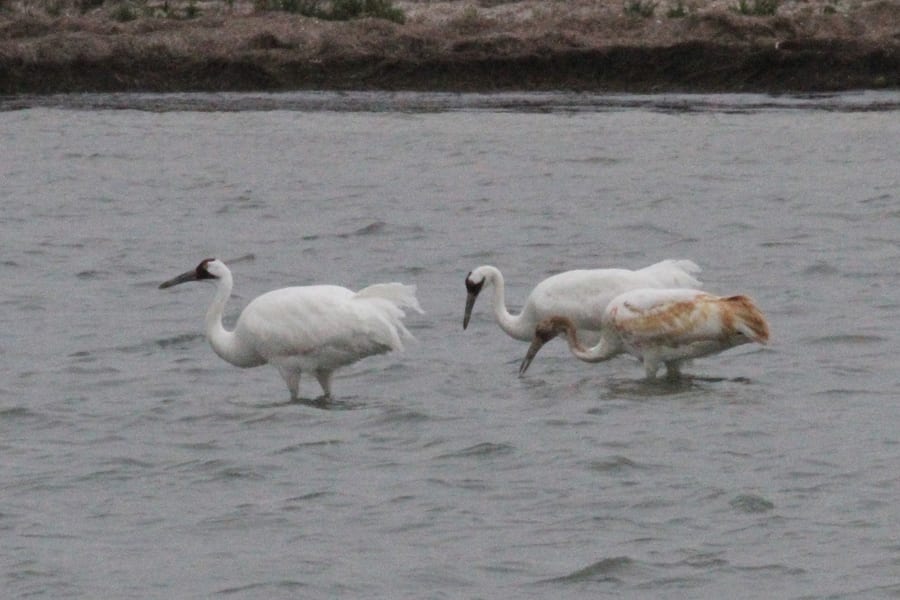 foggy in the morning and the 7:30 AM three-hour Whooping Crane outing on Captain Tommy Moore’s “Skimmer” had to be canceled, but we went out at 1 PM instead. The fog had lifted and it was unseasonably cold,
foggy in the morning and the 7:30 AM three-hour Whooping Crane outing on Captain Tommy Moore’s “Skimmer” had to be canceled, but we went out at 1 PM instead. The fog had lifted and it was unseasonably cold, 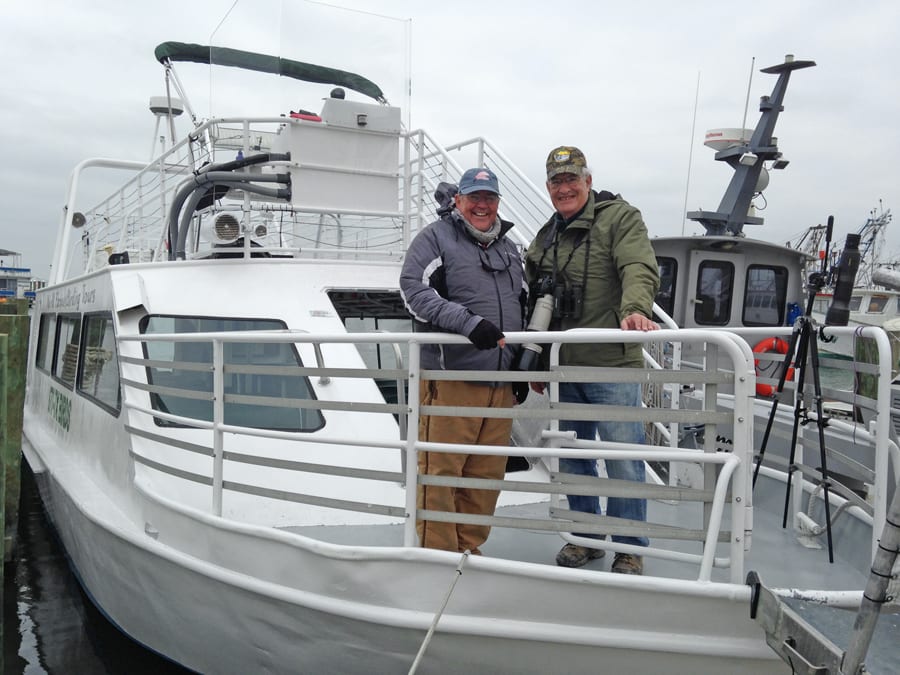 but boating conditions on Aransas Bay were otherwise fine. Captain Tommy, a knowledgeable birder in his own right, has a jovial upbeat manner, and takes special pride in endeavoring to provide as good views as possible of Whooping Cranes for his visitors, many of whom have traveled to Rockport especially for that purpose. Tommy also suggested an after
but boating conditions on Aransas Bay were otherwise fine. Captain Tommy, a knowledgeable birder in his own right, has a jovial upbeat manner, and takes special pride in endeavoring to provide as good views as possible of Whooping Cranes for his visitors, many of whom have traveled to Rockport especially for that purpose. Tommy also suggested an after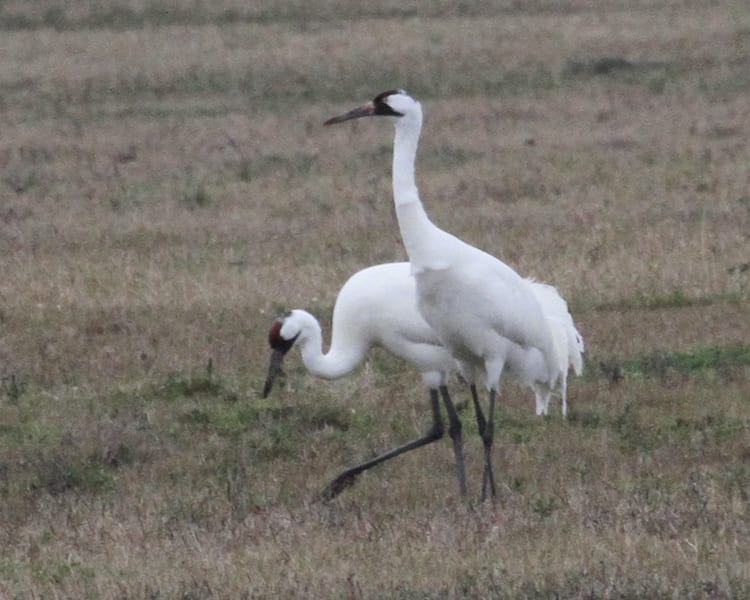 -boating stop at the nearby Big Tree area outside Goose Island SP where one can usually find additional Whooping Cranes in the cow fields there, and indeed such turned out to be the case. If you visit Rockport, be sure to try Charlotte Plummer’s Seafare Restaurant and order the house specialty baked fish – one of the most delicious meals I’ve had in many years of birding travels.
-boating stop at the nearby Big Tree area outside Goose Island SP where one can usually find additional Whooping Cranes in the cow fields there, and indeed such turned out to be the case. If you visit Rockport, be sure to try Charlotte Plummer’s Seafare Restaurant and order the house specialty baked fish – one of the most delicious meals I’ve had in many years of birding travels.
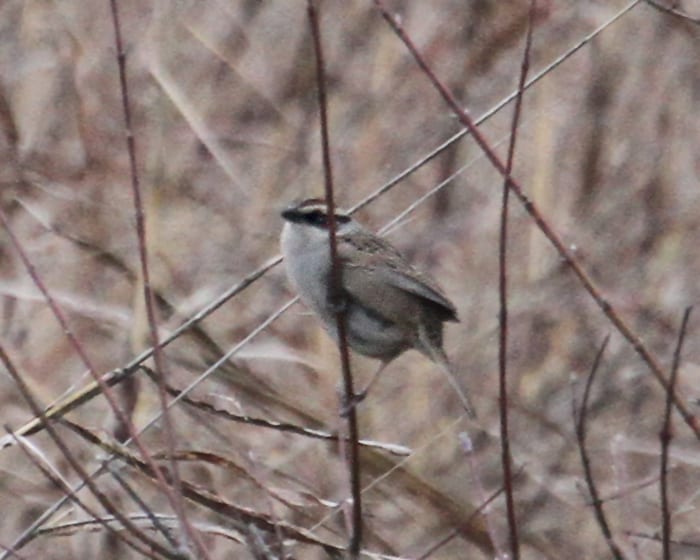 The last morning of the trip, following an overnight in Rockdale in Williamson County, began at sunrise along the San Gabriel River at a junction of two country roads where a lone Striped Sparrow, a first ever US sighting, was being reported keeping company with a mixed flock of other sparrows. The flock turned out to include Harris’s, Lincoln’s, Savannah, Song, White-crowned, White-
The last morning of the trip, following an overnight in Rockdale in Williamson County, began at sunrise along the San Gabriel River at a junction of two country roads where a lone Striped Sparrow, a first ever US sighting, was being reported keeping company with a mixed flock of other sparrows. The flock turned out to include Harris’s, Lincoln’s, Savannah, Song, White-crowned, White-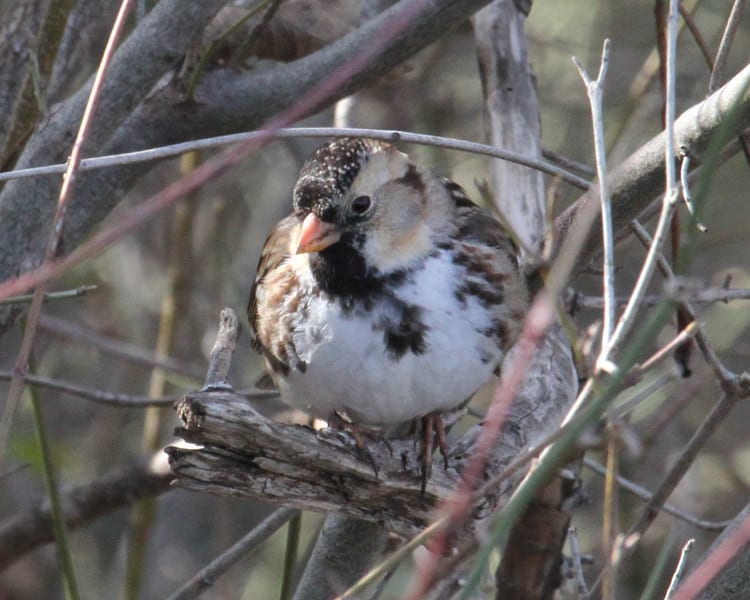 throated, and Swamp, as well as numerous Northern Cardinals, Red-winged Blackbirds, and Dark-eyed Juncos, but to my utter amazement the very first bird I spotted on arrival to the site at 7:30 AM was the Striped Sparrow itself, perched all alone conspicuously in a small tree along the roadside fence. It stayed in view for just a few minutes before it disappeared and, while I remained for another three hours hoping for a closer view, I never saw it again.
throated, and Swamp, as well as numerous Northern Cardinals, Red-winged Blackbirds, and Dark-eyed Juncos, but to my utter amazement the very first bird I spotted on arrival to the site at 7:30 AM was the Striped Sparrow itself, perched all alone conspicuously in a small tree along the roadside fence. It stayed in view for just a few minutes before it disappeared and, while I remained for another three hours hoping for a closer view, I never saw it again.
This Texas trip turned out to be the culmination of a ten year quest to photograph 700 ABA species in North America. Aplomado Falcon (recently made “countable”) was no. 698, Gray-crowned Yellowthroat 699, and Whooping Crane no. 700. Striped Sparrow becomes no. 701.
